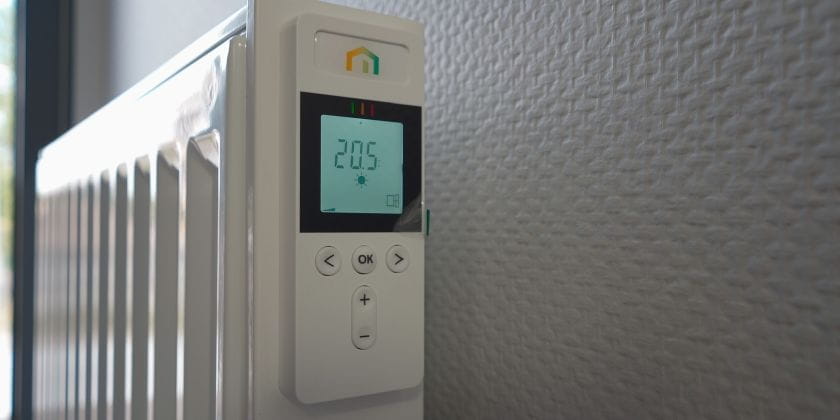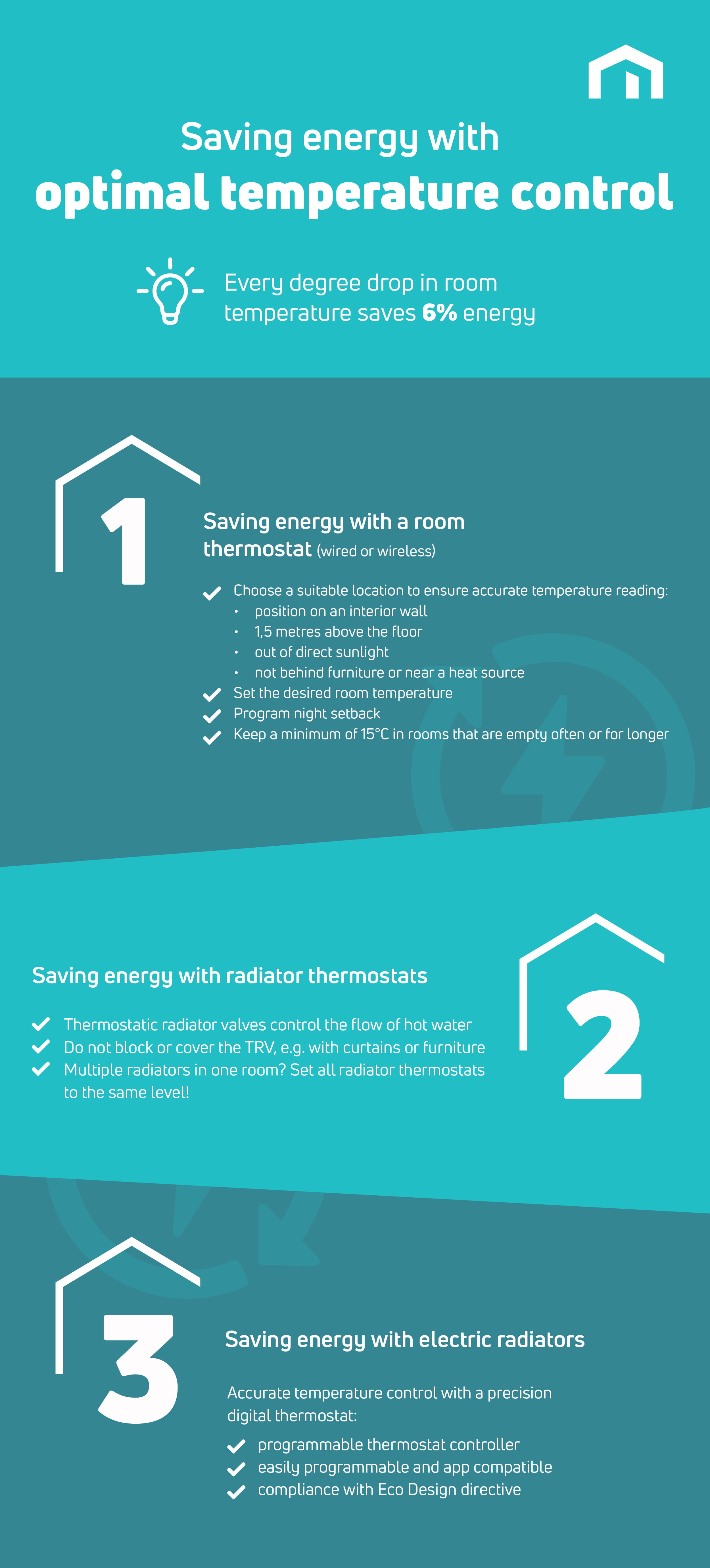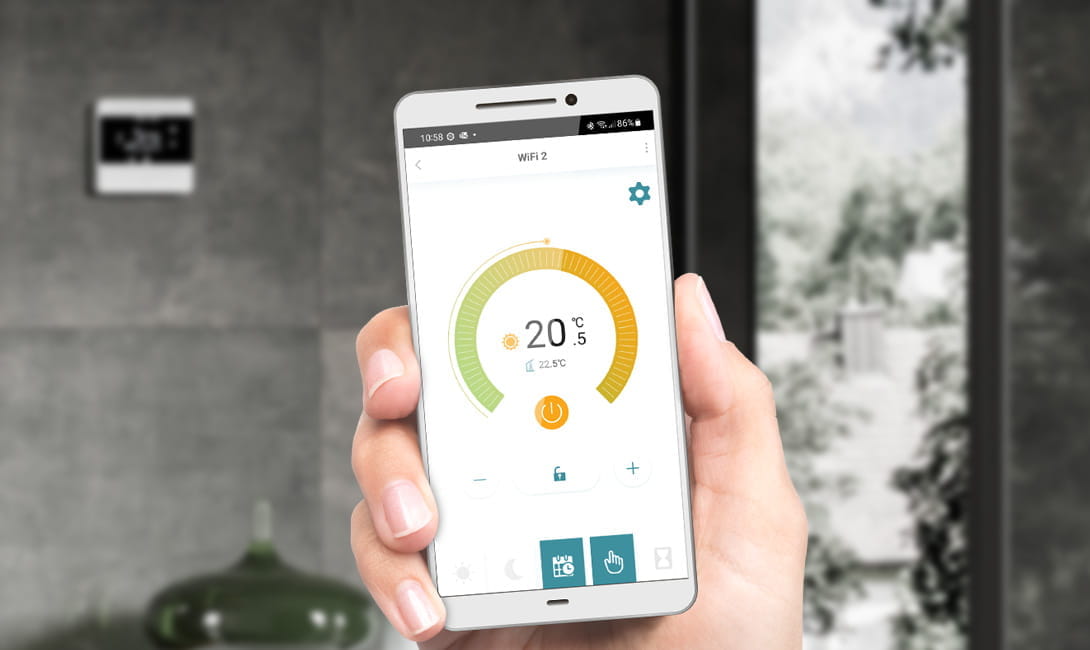- Energy saving
- Insights
- Improve efficiency
How to save energy with optimal temperature control
Turning down the thermostat
Energy-saving measures have already been promoted for quite some time. In an effort to reduce dependency on fossil fuels and reach net zero emissions by 2050, EU governments have implemented various policy changes and, in most countries, offer financial incentives to support a reduction in energy consumption and increased use of renewable energy. An added benefit for the end user is that by saving energy, they can also save money. In fact, turning down the thermostat just 1 or 2 °C can help lower energy bills by up to 6%.
Temperature control
The two types of thermostats that are most likely integrated in the HVAC system are room thermostats and radiator thermostats. By using these to efficiently control heating and cooling, it’s easy to enjoy indoor climate comfort while saving energy and helping the environment. Let’s look at how each type of thermostat can help save energy.
Saving energy with a room thermostat
Important to remember, even before you connect the room thermostat, is to install it in a suitable location. It’s generally recommended to mount it on an interior wall, about 1,5 meters above the floor and out of direct sunlight. Also make sure the device isn’t blocked by curtains or furniture or installed near a heat source. These guidelines will help to ensure that the thermostat can get an accurate reading of the room’s temperature.
Once installed, the thermostat is usually set between 18 and 21 °C, or 23 °C if there are elderly people or very young children in the room. Any higher and it will get uncomfortably warm. Turning the thermostat up won’t heat a room faster, it will just keep the heating on for longer, waste energy and cause the room to get too hot. Turning down the thermostat, on the other hand, can save money and energy. At night, for example, you can easily lower the temperature of a radiator system 2 to 3 °C. In case of an integrated system, such as underfloor heating, night setback needs to be tested to evaluate the system’s thermal inertia, which is linked to the building's insulation levels. Should the response delay be too long, it's advisable to maintain a constant temperature.
For rooms that aren’t often used or unoccupied for a long period of time, it’s best to maintain a minimum of 14 to 15 °C. A lower temperature could result in dampness, condensation, mould or building damage.

Saving energy with radiator thermostats
Radiator thermostats help to keep a room at the preferred temperature. Contrary to a room thermostat that controls the boiler, a thermostatic radiator valve (TRV) controls the flow of hot water through the radiator it’s fitted to. A sensor inside the radiator thermostat monitors the air temperature and reduces or increases the water flow depending on whether the room temperature is higher or lower than the TRV setting. Just like with a room thermostat, it’s important to not block or cover the thermostat with curtains, furniture, clothes, etc. This way the air around it can flow freely and you’re sure to get an accurate room temperature reading.
If there are multiple radiators in a single room, make sure to set all the radiator thermostats to the same level for an energy-efficient temperature control (3 to 4 in rooms that are used frequently, lower in bedrooms and rooms that are used less). Turning one of the thermostats down or off won’t save any energy as the other radiators will have to work harder and the heat will not be distributed evenly. When heat is distributed evenly, it’s easier to lower the room temperature and still feel warm.
Read more about the added value of thermostatic radiator valves in energy saving
Electric radiators
In case electric radiators are used rather than hydronic ones, precise temperature control is just as important to save energy, and sometimes even easier. This has to do with the fact that electric radiators are mostly used for single room heating to create heat when and where it’s needed at a given time. Additionally, electric radiators are equipped with a precision digital thermostat that monitors the room temperature and is easily programmable. All our electric radiators comply with the ECO Design directive, which sets mandatory ecological requirements in order to reduce energy consumption and CO2 emissions. To this end, for example, the radiators’ electronic thermostat has an accuracy of 0.2 °C to prevent overheating and needless energy consumption.

Read more about the controls on our Yali Plus electric radiators
Infographic temperature control

If you want to know more about how to save energy with our various climate comfort solutions, we invite you to discover our dedicated blog section. There you’ll find related articles explaining, for example, how heating controls help to lower the cost of comfort, zone temperature control and the role of hydronic balancing and radiator valves in energy saving.
Should you have any questions about the best way to integrate our controls or other products in your project(s), then don’t hesitate to contact us. We will more than happy to offer tailored advice.

